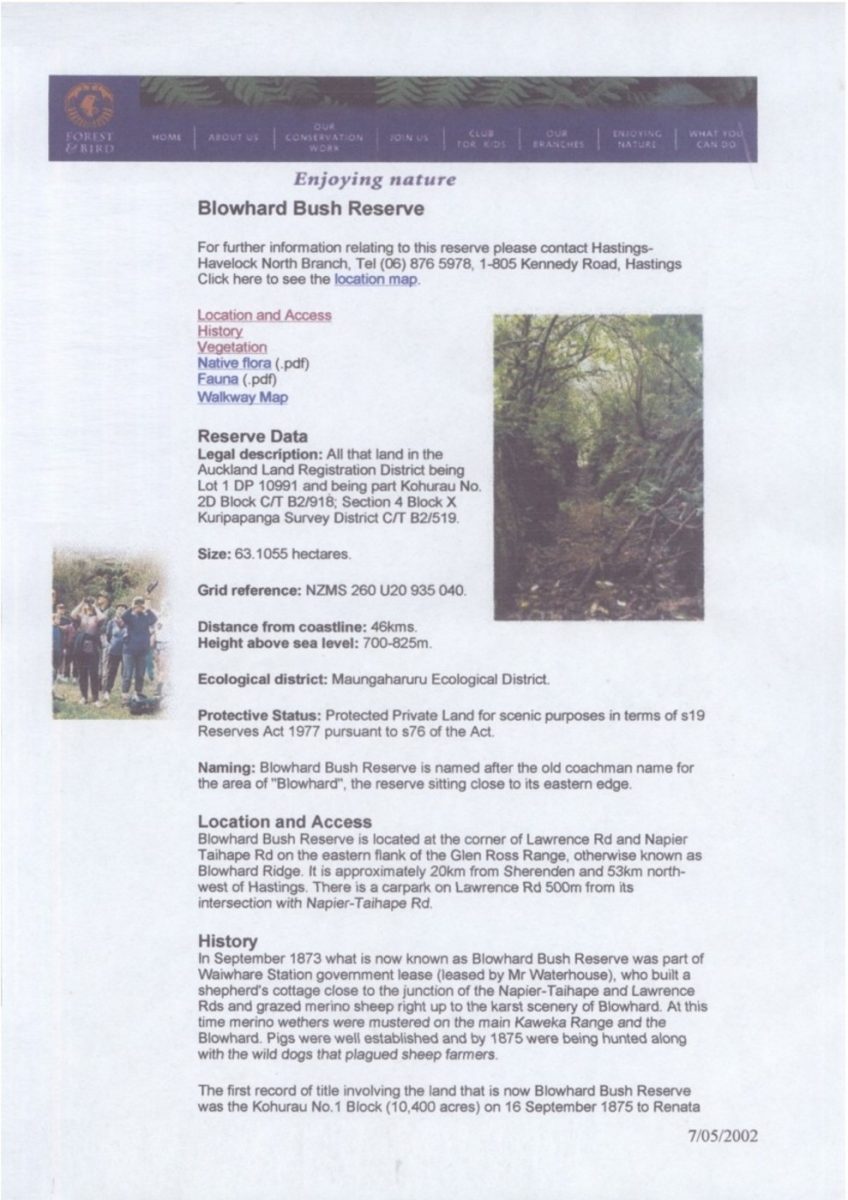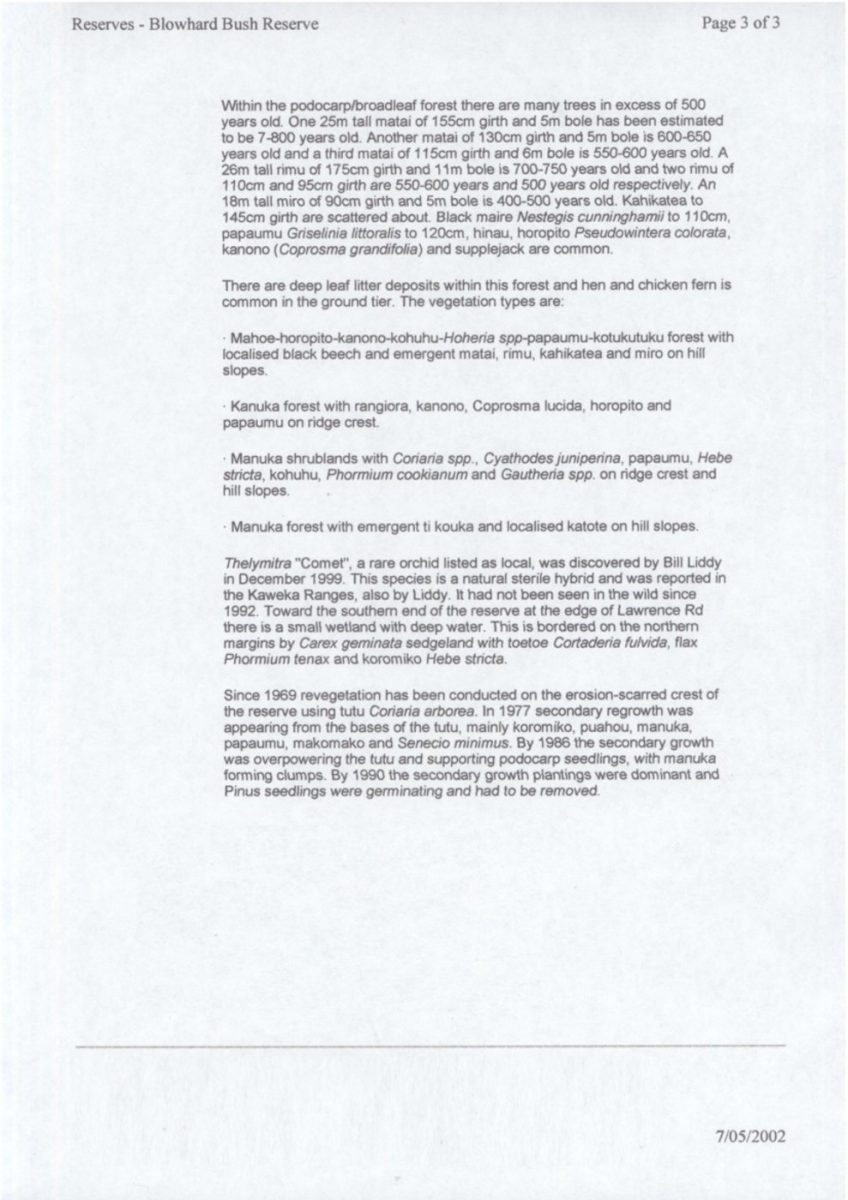Reserves – Blowhard Bush Reserve Page 3 of 3
Within the podocarp/broadleaf forest there are many trees in excess of 500 years old. One 25m tall matai of 155cm girth and 5m bole has been estimated to be 7-800 years old. Another matai of 130cm girth and 5m bole is 600-650 years old and a third matai of 115cm girth and 6m bole is 550-600 years old. A 26m tall rimu of 175cm girth and 11m bole is 700-750 years old and two rimu of 110cm and 95cm girth are 550-600 years and 500 years old respectively. An 18m tall miro of 90cm girth and 5m bole is 400-500 years old. Kahikatea to 145cm girth are scattered about. Black maire Nestegis cunninghamii to 110cm, papaumu Griselinia littoralis to 120cm, hinau, horopito Pseudowintera colorata, kanono (Coprosma grandifolia) and supplejack are common.
There are deep leaf litter deposits within this forest and hen and chicken fern is common in the ground tier. The vegetation types are:
Mahoe-horopito-kanono-kohuhu-Hoheria spp-papaumu-kotukutuku forest with localised black beech and emergent matai, rimu, kahikatea and miro on hill slopes.
Kanuka forest with rangiora, kanono, Coprosma lucida, horopito and papaumu on ridge crest.
Manuka shrublands with Coriaria spp., Cyathodes junierpina, papaumu, Hebe stricta, kokohu, Phormium cookianum and Gautheria spp. on ridge crest and hill slopes.
Manaka forest with emergent ti kouka and localised katote on hill slopes.
Thelymitra “Comet”, a rare orchid listed as local, was discovered by Bill Liddy in December 1999. This species is a natural sterile hybrid and was reported in the Kaweka Ranges, also by Liddy. It had not been seen in the wild since 1992. Toward the southern end of the reserve at the edge of Lawrence Rd there is a small wetland with deep water. This is bordered on the northern margins by Carex germinata sedgeland with toetoe Cortaderia fulvida, flax Phormium tenax and koromiko Hebe stricta.
Since 1969 revegetation has been conducted on the erosion-scarred crest of the reserve using tutu Coriaria arborea. In 1977 secondary regrowth was appearing from the bases of the tutu, mainly koromiko, puahou, manuka, papaumu, makomako and Senecio minimus. By 1986 the secondary growth was overpowering the tutu and supporting podocarp seedlings, with manuka forming clumps. By 1990 the secondary growth plantings were dominant and Pinus seedlings were germinating and had to be removed.
7/05/2002














Do you know something about this record?
Please note we cannot verify the accuracy of any information posted by the community.